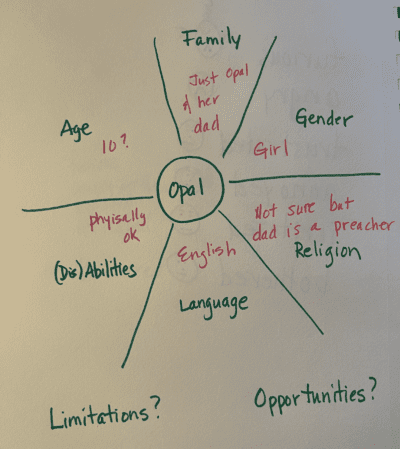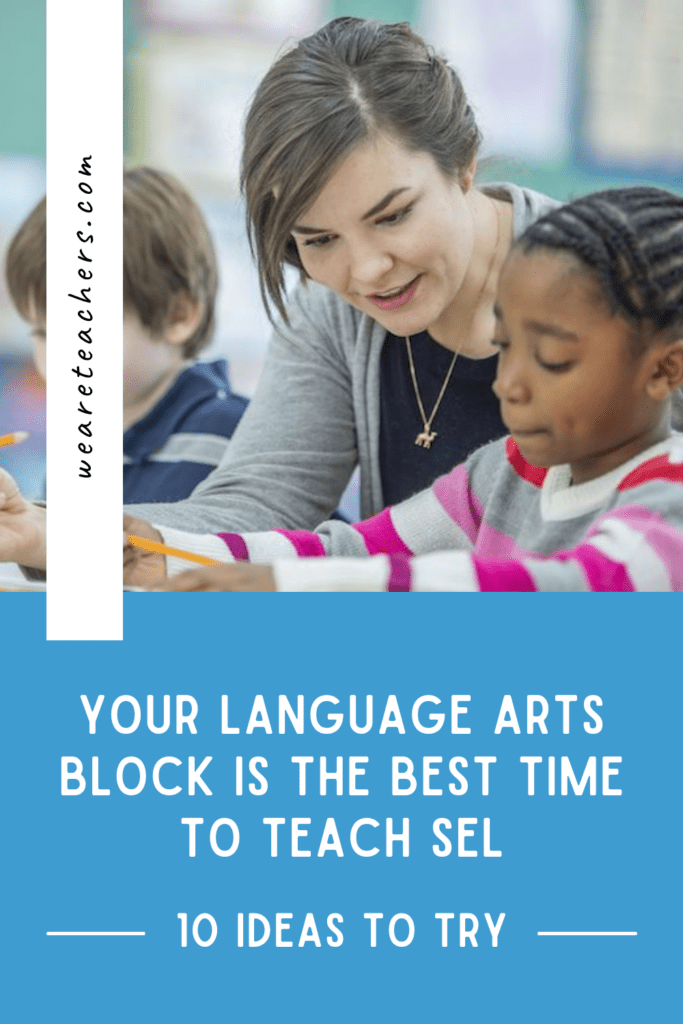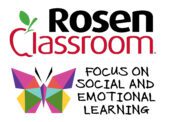There is no doubt that social and emotional learning is the gateway that unlocks academic learning. While SEL may feel like one more thing to squeeze into a time-crunched classroom, it doesn’t have to be, especially if you intentionally pair SEL with experiences in the language arts block. Here are 10 ideas to try.
1. “I Need My Teacher to Know” activity
Research has proven time and again that the number-one predictor of success in school is the relationship between teacher and student. To build this relationship, begin with a letter (or a conversation with the littlest learners) asking students to share with you what they most want you to know about them. This will reveal a whole lot of unexpected, sometimes emotional, insights to you and, in turn, build relationships and an affirming classroom community.
2. Study SEL vocabulary words
Vocabulary that is grounded in SEL also builds comprehension skills. Some of my favorite words to study with students are: resilience, hope, perseverance, relationships, identity, empathy, and community. Choose one of these words at a time, and use them in conversations again and again. They will become part of the fabric of your classroom and springboard into further learning.
3. “Shades of Meaning” activity
We know that when students are able to name their feelings or emotions, they are more likely to work through those emotions in healthy ways. For students to be able to name their emotions with clarity, try the “shades of meaning” exercise. First, pick a word that is used very often, such as “angry.” Then generate a group of words that hold a similar meaning—words such as frustrated, annoyed, furious, irritated, and bothered. Then ask students to put those words in order of intensity and even add an emoji to indicate the differences between the emotions. Students use this to identify their own emotions, helping them manage the emotions they are experiencing.

4. Use SEL vocabulary in poetry study
This approach helps deepen comprehension beyond just surface interpretations. First, take a favorite poem (or picture book, book, or song) and read it aloud. Notice, jot down, and talk about the thoughts everyone is having. Then pick an SEL vocabulary word you have studied together, such as “community,” to discover even more about the poem and SEL. Try it with this perfect poem from Rebecca Kai Dotlich.
5. Choose fictional read-alouds that support your SEL goals
Intentionally choose a read-aloud that addresses some area of SEL that you are trying to build with your students. For example, if you are looking to build perseverance, you might choose the book We Can Do It!. Read and notice what the character does to persevere through challenges. Make some class commitments on what everyone will do to work through challenges. This might include:
- Remind myself that even if I am frustrated, I can work through it.
- Use kind words in my mind.
- Use kind words to encourage others.
6. Use nonfiction texts to draw SEL conclusions
Nonfiction is another way to not only build reading skills but also SEL know-how through making reasoned judgments after analyzing facts. Take, for example, the text The Many People of America. Write down the facts learned from this text. Then look at those facts together and draw some conclusions. Some examples might include “America is made up of people from many backgrounds.”
7. Role-play using restorative questions
Restorative questioning is one of the best ways to resolve conflict between two or three students. These questions allow for the students to express themselves and also be heard. Using the very same questions in a role-play can help students dig more deeply into character motivations and relationships while simultaneously building empathy.
Take the book Ish by Peter Reynolds, for example. Ramón is the main character. His brother Leon uses unkind words to describe Ramón’s art. Students can role-play using restorative questioning. It might sound like this:
One student takes on the role of Leon and answers the following questions:
- What happened?
- What were you thinking at the time?
- What have you thought about since?
- Who has been affected by what you have done?
- In what way?
- What do you think you need to do to make things right?
Another student takes on the role of Ramón and answers the following questions:
- What did you think when you realized what happened?
- What impact has this had on you and others?
- What has been the hardest thing for you?
- What do you think needs to happen to make things right?
After the role-play, discuss what discoveries students made about these characters. Also discuss what this teaches them about themselves, other people, and the world.
8. Study characters’ identity
One of the best ways to build social awareness is through the study of identity. A safe place to begin this study of identity is with characters in books we read. Using an identity wheel can help students see many facets of identity and how they interplay. In this example, I used the character Opal from Because of Winn-Dixie by Kate DiCamillo. Notice how we can study identity and also consider how the character’s identity can create limitations and opportunities for her. The same is true for people in real life.

9. Use SEL vocab to spark writing
After a deep dive into vocabulary and reading, writing can bring SEL full circle to truly build emotional intelligence. Personal narrative writing is a fantastic way for students to express their emotions in healthy ways and to also manage those emotions. Go back to the vocabulary introduced, such as “community” or “resilience,” or emotions such as anger or frustration, and ask students to write about a time they felt that way. Students may also choose from a list of emotions and write stories about times they felt mixed emotions.
10. Fan fiction writing
Fan fiction is a type of writing in which the writer takes a character from a beloved book and writes a story with that character. It might be a prequel or a sequel, taking a different character’s point of view or adding a missing scene. Kindergartners through middle schoolers are enchanted by this genre. They also reap the benefits of living in the shoes of someone else and writing from that perspective. Deep lessons about emotional growth are learned through this experience.
Like these ideas for teaching SEL and ELA together? Check out this new SEL curriculum from Rosen.
Learn More About Focus on Social and Emotional Learning



